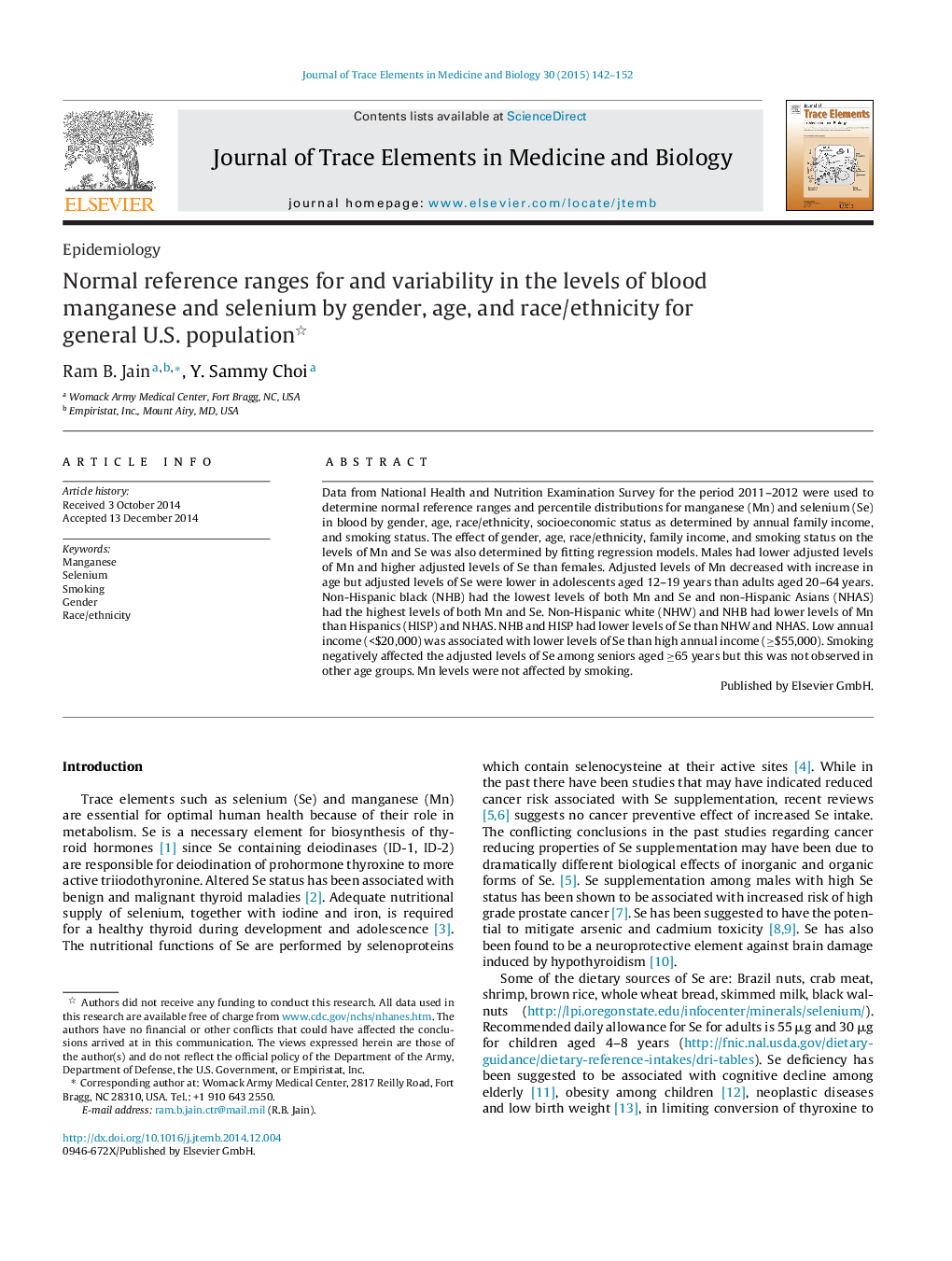| Article ID | Journal | Published Year | Pages | File Type |
|---|---|---|---|---|
| 1226356 | Journal of Trace Elements in Medicine and Biology | 2015 | 11 Pages |
•Normal reference ranges for manganese (Mn) and selenium (Se) in blood are presented.•Males had lower levels of Mn but higher levels of Se than females.•Non-Hispanics had lower levels of both Mn and Se than other race/ethnicities.•Non-Hispanic Asians had higher levels of both Mn and Se than other race/ethnicities.
Data from National Health and Nutrition Examination Survey for the period 2011–2012 were used to determine normal reference ranges and percentile distributions for manganese (Mn) and selenium (Se) in blood by gender, age, race/ethnicity, socioeconomic status as determined by annual family income, and smoking status. The effect of gender, age, race/ethnicity, family income, and smoking status on the levels of Mn and Se was also determined by fitting regression models. Males had lower adjusted levels of Mn and higher adjusted levels of Se than females. Adjusted levels of Mn decreased with increase in age but adjusted levels of Se were lower in adolescents aged 12–19 years than adults aged 20–64 years. Non-Hispanic black (NHB) had the lowest levels of both Mn and Se and non-Hispanic Asians (NHAS) had the highest levels of both Mn and Se. Non-Hispanic white (NHW) and NHB had lower levels of Mn than Hispanics (HISP) and NHAS. NHB and HISP had lower levels of Se than NHW and NHAS. Low annual income (<$20,000) was associated with lower levels of Se than high annual income (≥$55,000). Smoking negatively affected the adjusted levels of Se among seniors aged ≥65 years but this was not observed in other age groups. Mn levels were not affected by smoking.
